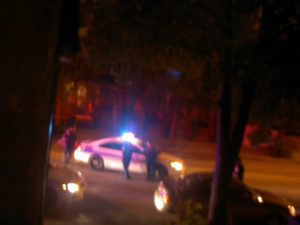Fairfax Breaking and Entering
April 20, 2017 by Jean Humbrecht
A Fairfax Breaking and Entering involves entering another person’s property to commit a crime. An offender can be convicted of a Fairfax Breaking and Entering for entering property at night, breaking and entering property during the day or night, entering and hiding, or entering a public place with an intent to commit a crime. A Fairfax Breaking and Entering charge is a serious felony and can be punished with up to life in prison if the offender was armed with a deadly weapon.
Elements of Fairfax Breaking and Entering
An offender can only be convicted of a Fairfax Breaking and Entering for entering someone else’s property with criminal intent. The Commonwealth must prove either an entry at night, a breaking and entering at any time, entering and hiding, or entering a public place, as well as the intent to commit a crime.
A breaking occurs by using force against a structure to gain entry. The force does not need to cause damage to be considered a breaking. Entering is an intrusion into the interior space of a structure.


A Fairfax Breaking and Entering Can Occur During the Day or at Night
Breaking and Entering Charges in Fairfax
There are a number of Fairfax Breaking and Entering charges, discussed in detail below.
Burglary
Burglary in Fairfax is breaking and entering into a dwelling house at night with the intent to commit a larceny or felony. A Fairfax Burglary is a Class 3 felony, punished with 5-20 years in prison and a fine up to $100,000. Burglary in Fairfax can be punished with a minimum of 20 years up to life in prison if the offender committed the crime while armed with a deadly weapon.
For more information on a Fairfax Burglary, click here.
Breaking and Entering with Intent to Commit Murder, Rape, Robbery or Arson
A Fairfax Breaking and Entering to Commit Murder, Rape, Robbery, or Arson can be committed by entering at night, breaking and entering during the day or night, entering and hiding, or entering a business or other place open to the public with criminal intent. This offense is a Class 3 felony, punished with 5-20 years in prison and a fine up to $100,000. If the offender was armed with a deadly weapon, the offense can be punished with up to life in prison.
For more information on a Fairfax Breaking and Entering with Intent to Commit Murder, Rape, Robbery, or Arson, click here.
Breaking and Entering with Intent to Commit Felony, Larceny, or Assault and Battery
A Fairfax Breaking and Entering to commit a felony (other than those listed in Va. Code §18.2-90), Larceny, or Assault and Battery can be committed by entering at night, breaking and entering during the day or night, entering and hiding, or entering a business or other place open to the public with intent to commit one of the listed crimes. This offense is punished with up to 20 years in prison and a fine up to $2,500. If the offender was armed with a deadly weapon, the offender faces a minimum of 20 years up to life in prison.
For more information on a Fairfax Breaking and Entering with the Intent to Commit a Felony, Larceny, or Assault and Battery, click here.
Breaking and Entering with Intent to Commit Misdemeanor
A Fairfax Breaking and Entering to commit a misdemeanor (other than Assault and Battery or Trespass) is committed by breaking and entering an occupied dwelling house during the day or night. This offense is a Class 6 felony, punished with up to 5 years in prison and a fine up to $2,500. If the offender was armed with a deadly weapon, the offense can be punished with 20 years up to life in prison.
For more information on a Fairfax Breaking and Entering with the Intent to Commit a Misdemeanor, click here.
Bank Burglary
A Fairfax Bank Burglary is committed by entering a banking house during the day or night, while armed with a deadly weapon, with the intent to commit larceny of money, notes, bonds, or securities. A Bank Burglary in Fairfax is a Class 2 felony, punished with 20 years up to life in prison.
For more information on a Fairfax Bank Burglary charge, click here.
***DISCLAIMER: THE MATERIAL AND INFORMATION CONTAINED IN THIS POST, ON ANY PAGES ON THIS WEBSITE, AND ON ANY PAGES LINKED FROM THESE PAGES, ARE FOR GENERAL INFORMATION ONLY AND NOT LEGAL ADVICE. YOU SHOULD CONSULT A LICENSED ATTORNEY IN YOUR JURISDICTION BEFORE RELYING ON ANY OF THE INFORMATION CONTAINED ON THESE PAGES. SENDING EMAIL TO OR VIEWING INFORMATION FROM THIS WEBSITE DOES NOT CREATE AN ATTORNEY-CLIENT RELATIONSHIP***





